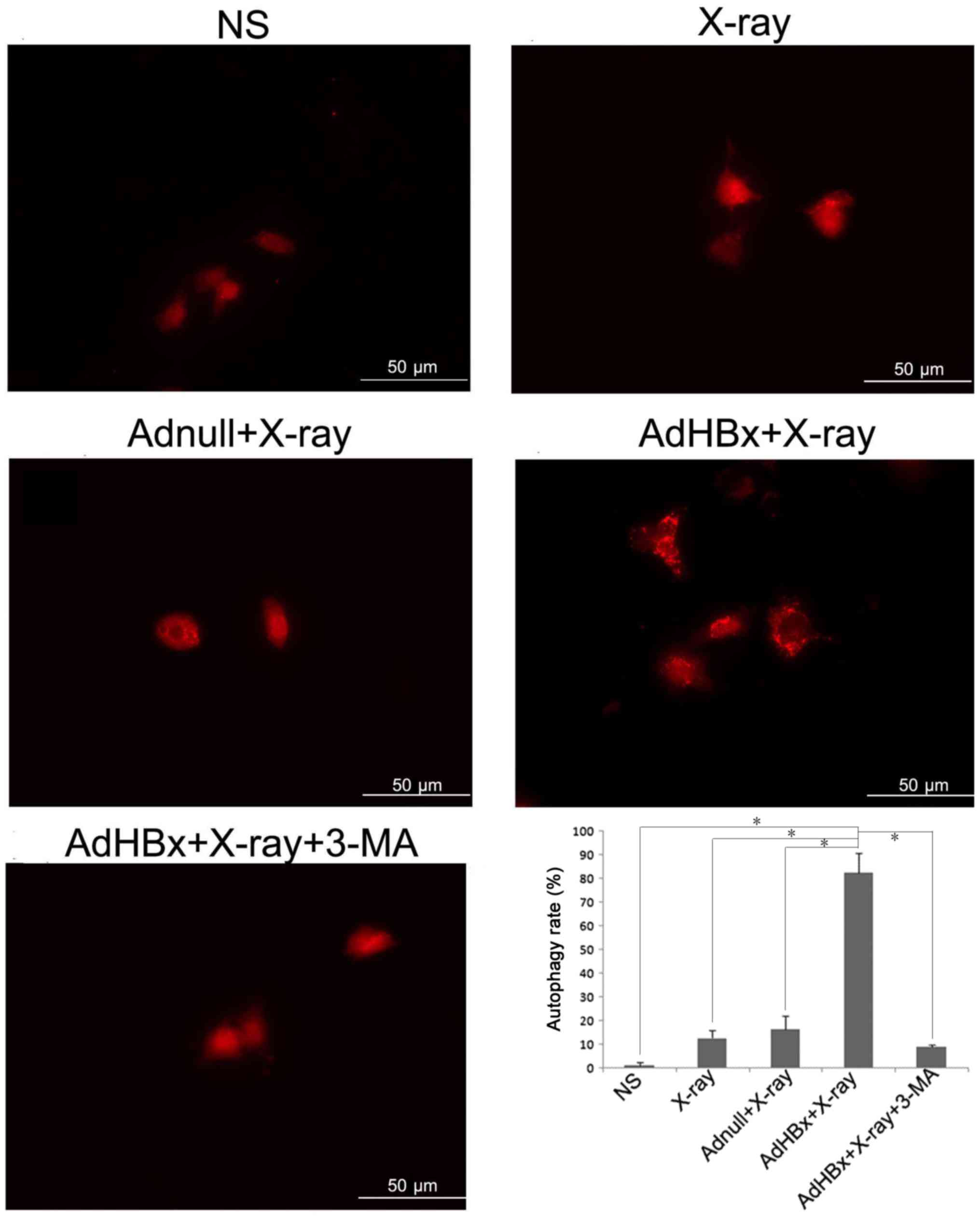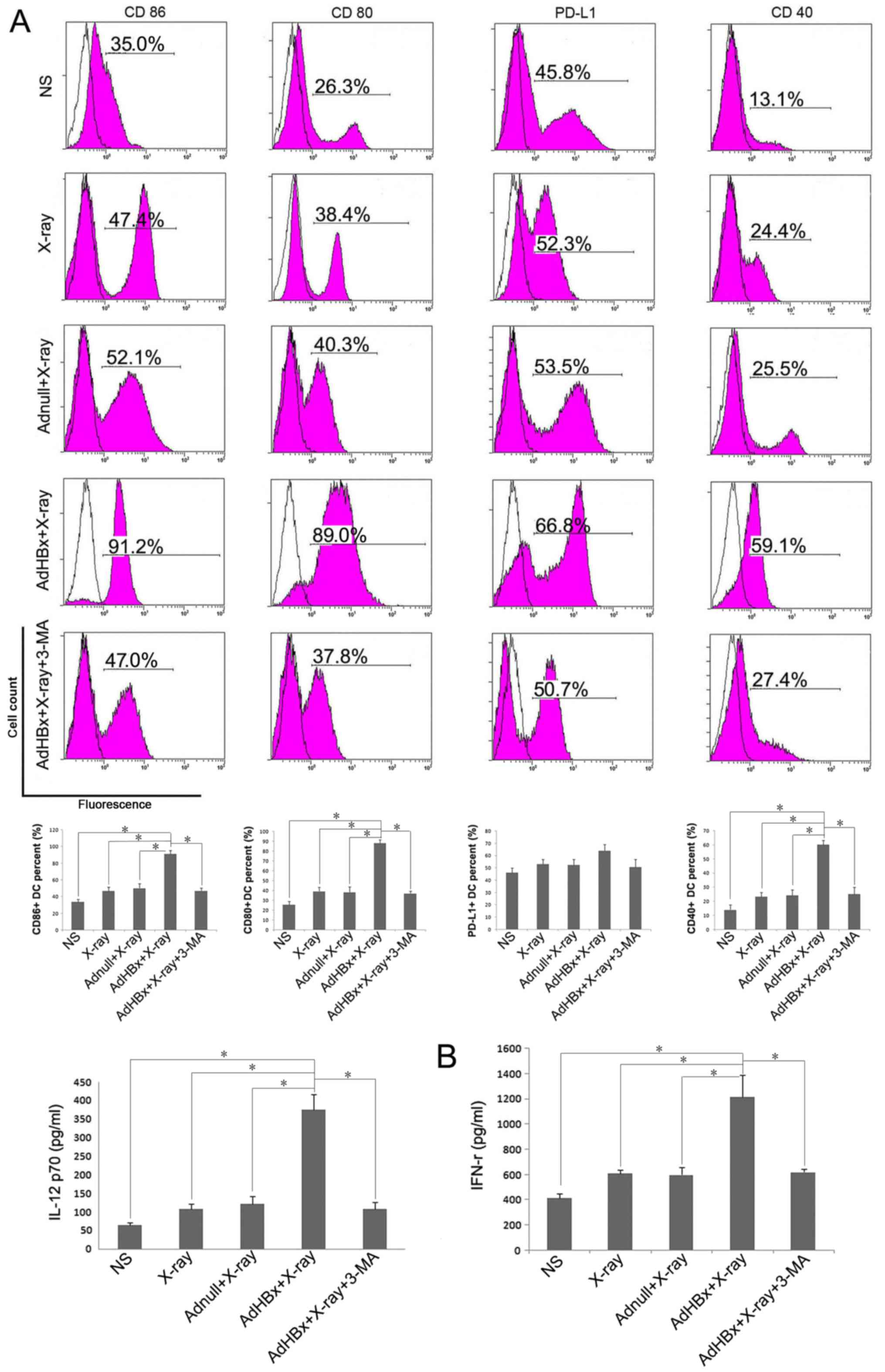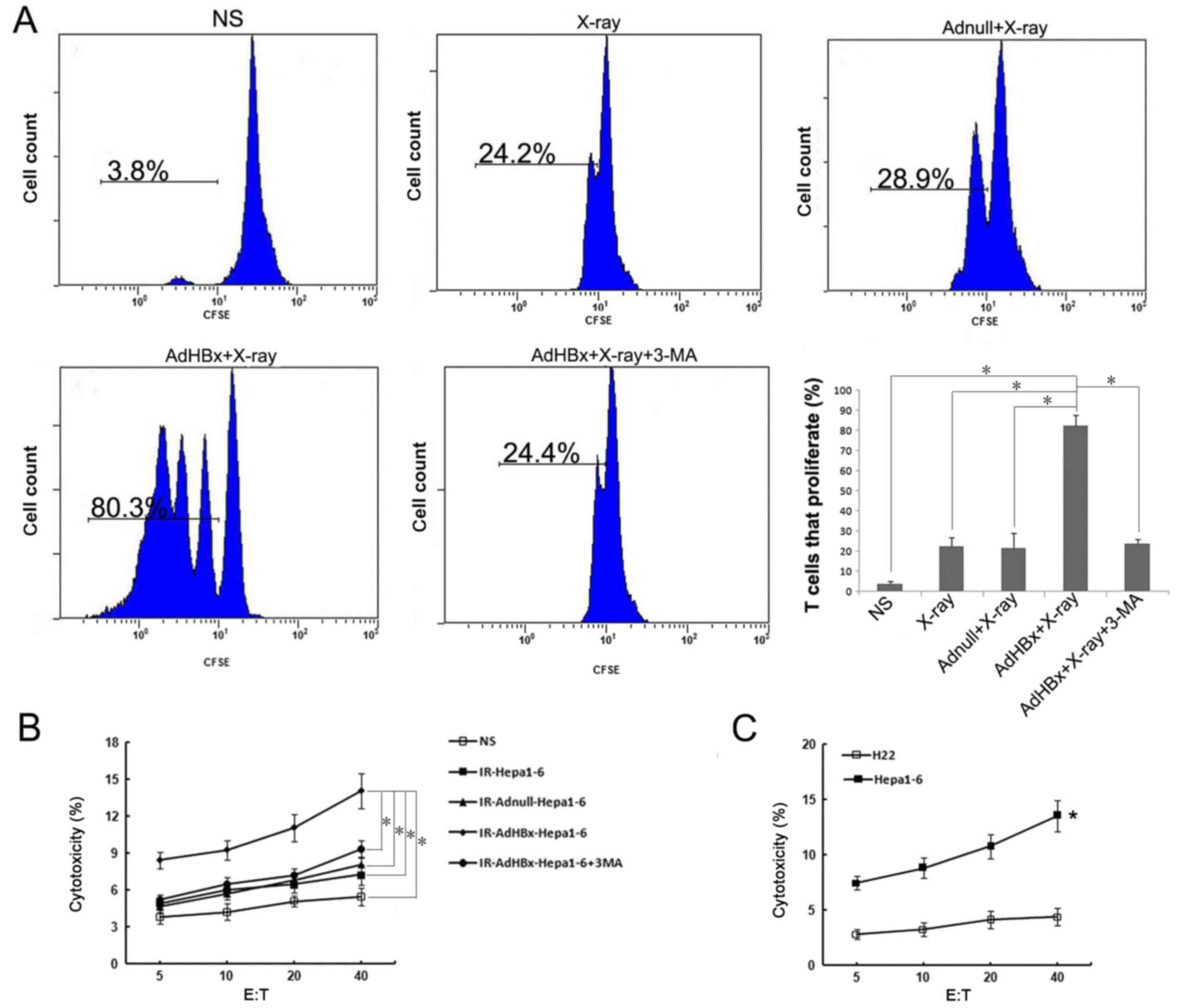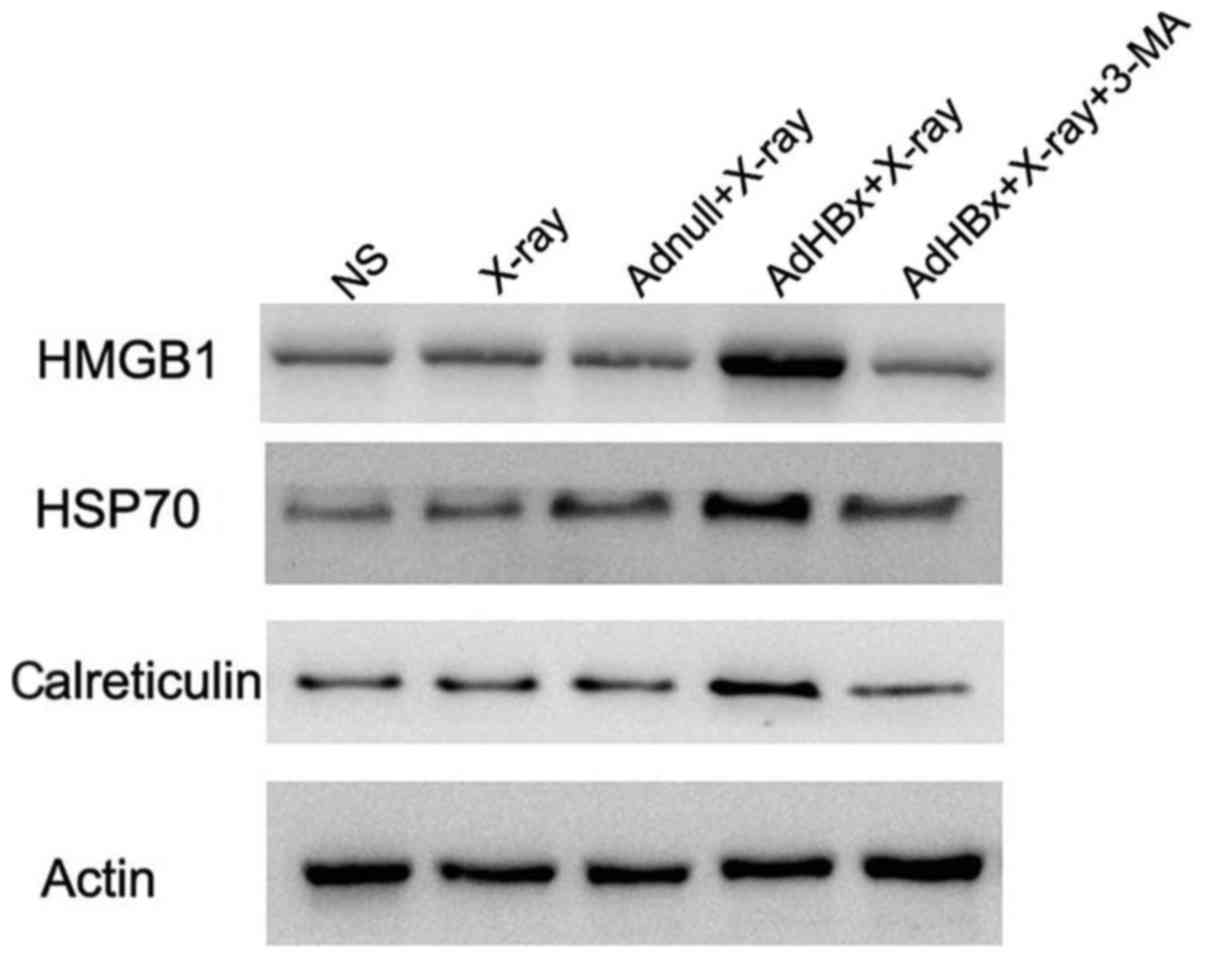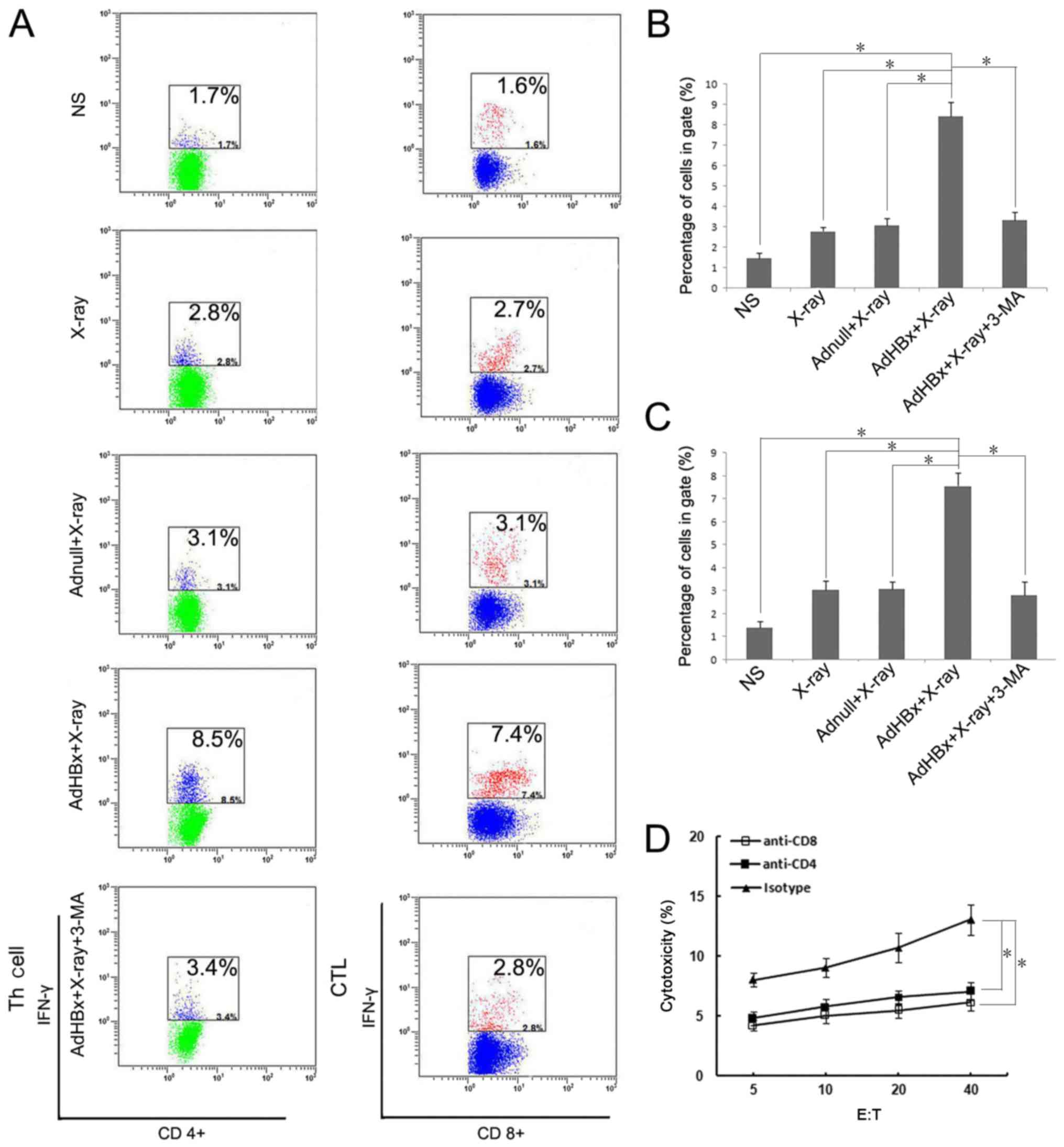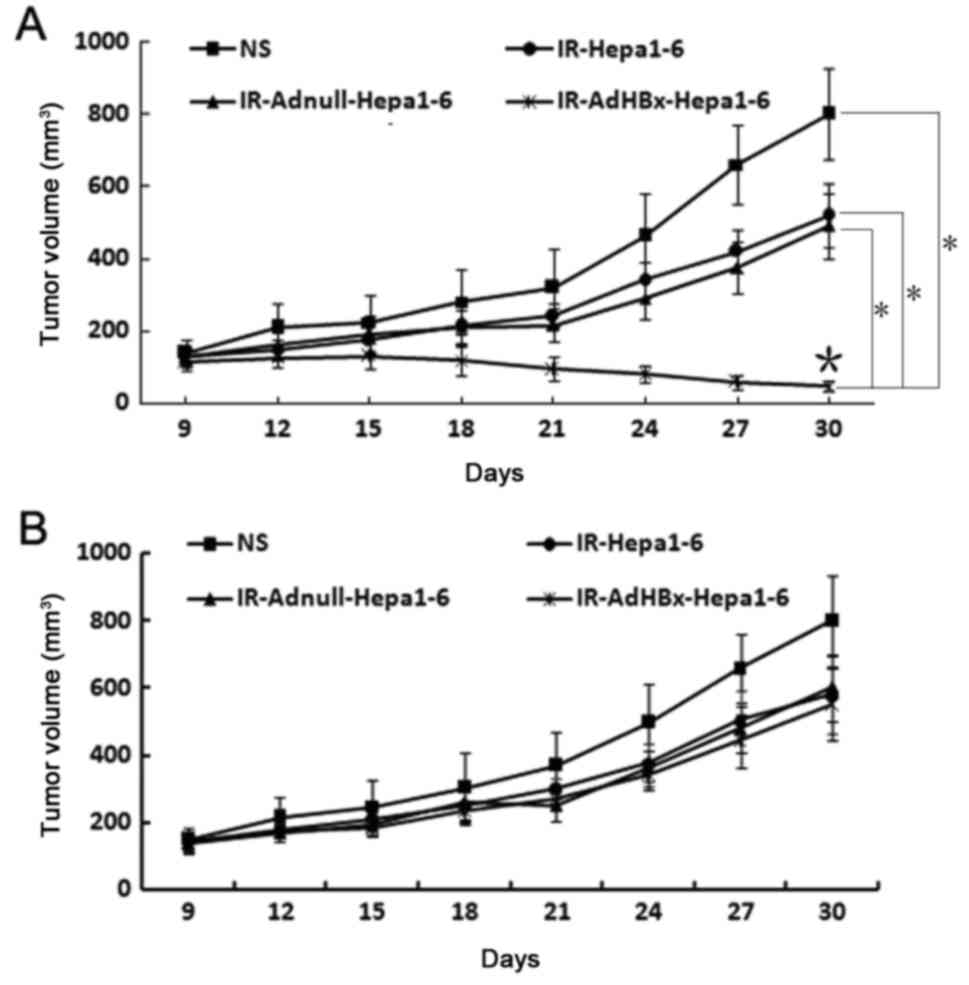|
1
|
Steinman RM: The dendritic cell system and
its role in immunogenicity. Annu Rev Immunol. 9:271–296. 1991.
View Article : Google Scholar : PubMed/NCBI
|
|
2
|
Hart DN: Dendritic cells: Unique leukocyte
populations which control the primary immune response. Blood.
90:3245–3287. 1997.PubMed/NCBI
|
|
3
|
Rock KL: A new foreign policy: MHC class I
molecules monitor the outside world. Immunol Today. 17:131–137.
1996. View Article : Google Scholar : PubMed/NCBI
|
|
4
|
Fields RC, Shimizu K and Mulè JJ: Murine
dendritic cells pulsed with whole tumor lysates mediate potent
antitumor immune responses in vitro and in vivo. Proc Natl Acad Sci
USA. 95:9482–9487. 1998. View Article : Google Scholar : PubMed/NCBI
|
|
5
|
Perez CA, Fu A, Onishko H, Hallahan DE and
Geng L: Radiation induces an antitumour immune response to mouse
melanoma. Int J Radiat Biol. 85:1126–1136. 2009. View Article : Google Scholar : PubMed/NCBI
|
|
6
|
Weiss EM, Frey B, Rödel F, Herrmann M,
Schlücker E, Voll RE, Fietkau R and Gaipl US: Ex vivo- and in
vivo-induced dead tumor cells as modulators of antitumor responses.
Ann NY Acad Sci. 1209:109–117. 2010. View Article : Google Scholar : PubMed/NCBI
|
|
7
|
Das A and Ali N: Vaccine prospects of
killed but metabolically active Leishmania against visceral
leishmaniasis. Expert Rev Vaccines. 11:783–785. 2012. View Article : Google Scholar : PubMed/NCBI
|
|
8
|
Hoshimoto S, Faries MB, Morton DL, Shingai
T, Kuo C, Wang HJ, Elashoff R, Mozzillo N, Kelley MC, Thompson JF,
et al: Assessment of prognostic circulating tumor cells in a phase
III trial of adjuvant immunotherapy after complete resection of
stage IV melanoma. Ann Surg. 255:357–362. 2012. View Article : Google Scholar : PubMed/NCBI
|
|
9
|
Miguel A, Herrero MJ, Sendra L, Botella R,
Algás R, Sánchez M and Aliño SF: Comparative antitumor effect among
GM-CSF, IL-12 and GM-CSF+IL-12 genetically modified tumor cell
vaccines. Cancer Gene Ther. 20:576–581. 2013. View Article : Google Scholar : PubMed/NCBI
|
|
10
|
Yan HX, Cheng P, Wei HY, Shen GB, Fu LX,
Ni J, Wu Y and Wei YQ: Active immunotherapy for mouse breast cancer
with irradiated whole-cell vaccine expressing VEGFR2. Oncol Rep.
29:1510–1516. 2013. View Article : Google Scholar : PubMed/NCBI
|
|
11
|
Meijer SL, Dols A, Jensen SM, Hu HM,
Miller W, Walker E, Romero P, Fox BA and Urba WJ: Induction of
circulating tumor-reactive CD8+ T cells after
vaccination of melanoma patients with the gp100 209-2M peptide. J
Immunother. 30:533–543. 2007. View Article : Google Scholar : PubMed/NCBI
|
|
12
|
Zhang X, Mei W, Zhang L, Yu H, Zhao X, Fan
X, Qian G and Ge S: Co-expression of P1A35–43/β2m fusion
protein and co-stimulatory molecule CD80 elicits effective
anti-tumor immunity in the P815 mouse mastocytoma tumor model.
Oncol Rep. 22:1213–1220. 2009.PubMed/NCBI
|
|
13
|
Iero M, Filipazzi P, Castelli C, Belli F,
Valdagni R, Parmiani G, Patuzzo R, Santinami M and Rivoltini L:
Modified peptides in anti-cancer vaccines: Are we eventually
improving anti-tumour immunity? Cancer Immunol Immunother.
58:1159–1167. 2009. View Article : Google Scholar : PubMed/NCBI
|
|
14
|
Yan Y, Liu N, Lu L, Zang CM, Shao B, Li Y,
Wen Y, Wei Y and Cheng P: Autophagy enhances antitumor immune
responses induced by irradiated hepatocellular carcinoma cells
engineered to express hepatitis B virus X protein. Oncol Rep.
30:993–999. 2013. View Article : Google Scholar : PubMed/NCBI
|
|
15
|
Luo C, Shen G, Liu N, Gong F, Wei X, Yao
S, Liu D, Teng X, Ye N, Zhang N, et al: Ammonia drives dendritic
cells into dysfunction. J Immunol. 193:1080–1089. 2014. View Article : Google Scholar : PubMed/NCBI
|
|
16
|
Norman JM, Cohen GM and Bampton ET: The in
vitro cleavage of the hAtg proteins by cell death proteases.
Autophagy. 6:1042–1056. 2010. View Article : Google Scholar : PubMed/NCBI
|
|
17
|
Bevan MJ: Cross-priming for a secondary
cytotoxic response to minor H antigens with H-2 congenic
cells which do not cross-react in the cytotoxic assay. J Exp Med.
143:1283–1288. 1976. View Article : Google Scholar : PubMed/NCBI
|
|
18
|
Huang AY, Golumbek P, Ahmadzadeh M, Jaffee
E, Pardoll D and Levitsky H: Role of bone marrow-derived cells in
presenting MHC class I-restricted tumor antigens. Science.
264:961–965. 1994. View Article : Google Scholar : PubMed/NCBI
|
|
19
|
Rehermann B and Nascimbeni M: Immunology
of hepatitis B virus and hepatitis C virus infection. Nat Rev
Immunol. 5:215–229. 2005. View
Article : Google Scholar : PubMed/NCBI
|
|
20
|
Malmassari S, Lone YC, Zhang M, Transy C
and Michel ML: In vivo hierarchy of immunodominant and subdominant
HLA-A*0201-restricted T-cell epitopes of HBx antigen of hepatitis B
virus. Microbes Infect. 7:626–634. 2005. View Article : Google Scholar : PubMed/NCBI
|
|
21
|
Ding FX, Wang F, Lu YM, Li K, Wang KH, He
XW and Sun SH: Multiepitope peptide-loaded virus-like particles as
a vaccine against hepatitis B virus-related hepatocellular
carcinoma. Hepatology. 49:1492–1502. 2009. View Article : Google Scholar : PubMed/NCBI
|
|
22
|
Li Y, Cheng P, Wen Y, Chen P, Yang L, Zhao
X, Lv H, Quan Q, Wu Y, Yang H, et al: T lymphocyte responses
against hepatitis B virus-related hepatocellular carcinoma induced
by adenovirus vaccine encoding HBx. Int J Mol Med. 26:869–876.
2010.PubMed/NCBI
|
|
23
|
Podojil JR and Miller SD: Targeting the B7
family of co-stimulatory molecules: Successes and challenges.
BioDrugs. 27:1–13. 2013. View Article : Google Scholar : PubMed/NCBI
|
|
24
|
Townsend SE and Allison JP: Tumor
rejection after direct costimulation of CD8+ T cells by
B7-transfected melanoma cells. Science. 259:368–370. 1993.
View Article : Google Scholar : PubMed/NCBI
|
|
25
|
Kim R, Emi M and Tanabe K: Cancer
immunoediting from immune surveillance to immune escape.
Immunology. 121:1–14. 2007. View Article : Google Scholar : PubMed/NCBI
|
|
26
|
Beatty GL and Gladney WL: Immune escape
mechanisms as a guide for cancer immunotherapy. Clin Cancer Res.
21:687–692. 2015. View Article : Google Scholar : PubMed/NCBI
|
|
27
|
Rabinovich GA, Gabrilovich D and Sotomayor
EM: Immunosuppressive strategies that are mediated by tumor cells.
Annu Rev Immunol. 25:267–296. 2007. View Article : Google Scholar : PubMed/NCBI
|
|
28
|
Mizushima N, Yoshimori T and Ohsumi Y: The
role of Atg proteins in autophagosome formation. Annu Rev Cell Dev
Biol. 27:107–132. 2011. View Article : Google Scholar : PubMed/NCBI
|
|
29
|
Virgin HW and Levine B: Autophagy genes in
immunity. Nat Immunol. 10:461–470. 2009. View Article : Google Scholar : PubMed/NCBI
|
|
30
|
Mizushima N and Levine B: Autophagy in
mammalian development and differentiation. Nat Cell Biol.
12:823–830. 2010. View Article : Google Scholar : PubMed/NCBI
|
|
31
|
Li Y, Wang LX, Yang G, Hao F, Urba WJ and
Hu HM: Efficient cross-presentation depends on autophagy in tumor
cells. Cancer Res. 68:6889–6895. 2008. View Article : Google Scholar : PubMed/NCBI
|
|
32
|
Uhl M, Kepp O, Jusforgues-Saklani H,
Vicencio JM, Kroemer G and Albert ML: Autophagy within the antigen
donor cell facilitates efficient antigen cross-priming of
virus-specific CD8+ T cells. Cell Death Differ.
16:991–1005. 2009. View Article : Google Scholar : PubMed/NCBI
|
|
33
|
Tang H, Da L, Mao Y, Li Y, Li D, Xu Z, Li
F, Wang Y, Tiollais P, Li T and Zhao M: Hepatitis B virus X protein
sensitizes cells to starvation-induced autophagy via up-regulation
of beclin 1 expression. Hepatology. 49:60–71. 2009.
View Article : Google Scholar : PubMed/NCBI
|
|
34
|
Sir D, Tian Y, Chen WL, Ann DK, Yen TS and
Ou JH: The early autophagic pathway is activated by hepatitis B
virus and required for viral DNA replication. Proc Natl Acad Sci
USA. 107:4383–4388. 2010. View Article : Google Scholar : PubMed/NCBI
|
|
35
|
Esensten JH, Helou YA, Chopra G, Weiss A
and Bluestone JA: CD28 costimulation: From mechanism to therapy.
Immunity. 44:973–988. 2016. View Article : Google Scholar : PubMed/NCBI
|
|
36
|
Keir ME, Butte MJ, Freeman GJ and Sharpe
AH: PD-1 and its ligands in tolerance and immunity. Annu Rev
Immunol. 26:677–704. 2008. View Article : Google Scholar : PubMed/NCBI
|
|
37
|
Bennett SR, Carbone FR, Karamalis F,
Miller JF and Heath WR: Induction of a CD8+ cytotoxic T
lymphocyte response by cross-priming requires cognate
CD4+ T cell help. J Exp Med. 186:65–70. 1997. View Article : Google Scholar : PubMed/NCBI
|
|
38
|
Cassell D and Forman J: Linked recognition
of helper and cytotoxic antigenic determinants for the generation
of cytotoxic T lymphocytes. Ann NY Acad Sci. 532:51–60. 1988.
View Article : Google Scholar : PubMed/NCBI
|
|
39
|
Matzinger P: Tolerance, danger, and the
extended family. Annu Rev Immunol. 12:991–1045. 1994. View Article : Google Scholar : PubMed/NCBI
|
|
40
|
Nickel W and Rabouille C: Mechanisms of
regulated unconventional protein secretion. Nat Rev Mol Cell Biol.
10:148–155. 2009. View Article : Google Scholar : PubMed/NCBI
|
|
41
|
Deretic V, Jiang S and Dupont N: Autophagy
intersections with conventional and unconventional secretion in
tissue development, remodeling and inflammation. Trends Cell Biol.
22:397–406. 2012. View Article : Google Scholar : PubMed/NCBI
|
|
42
|
Tian J, Avalos AM, Mao SY, Chen B, Senthil
K, Wu H, Parroche P, Drabic S, Golenbock D, Sirois C, et al:
Toll-like receptor 9-dependent activation by DNA-containing immune
complexes is mediated by HMGB1 and RAGE. Nat Immunol. 8:487–496.
2007. View Article : Google Scholar : PubMed/NCBI
|
|
43
|
Garg AD, Krysko DV, Vandenabeele P and
Agostinis P: Hypericin-based photodynamic therapy induces surface
exposure of damage-associated molecular patterns like HSP70 and
calreticulin. Cancer Immunol Immunother. 61:215–221. 2012.
View Article : Google Scholar : PubMed/NCBI
|
|
44
|
Obeid M, Tesniere A, Ghiringhelli F, Fimia
GM, Apetoh L, Perfettini JL, Castedo M, Mignot G, Panaretakis T,
Casares N, et al: Calreticulin exposure dictates the immunogenicity
of cancer cell death. Nat Med. 13:54–61. 2007. View Article : Google Scholar : PubMed/NCBI
|















